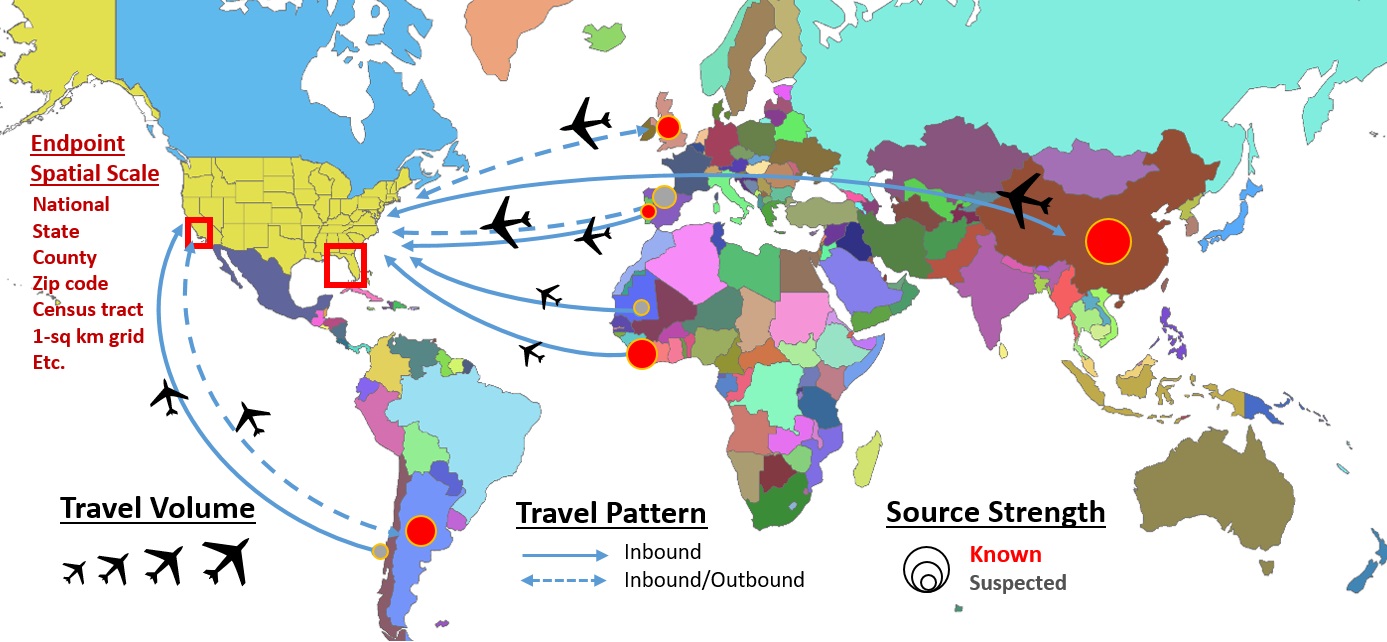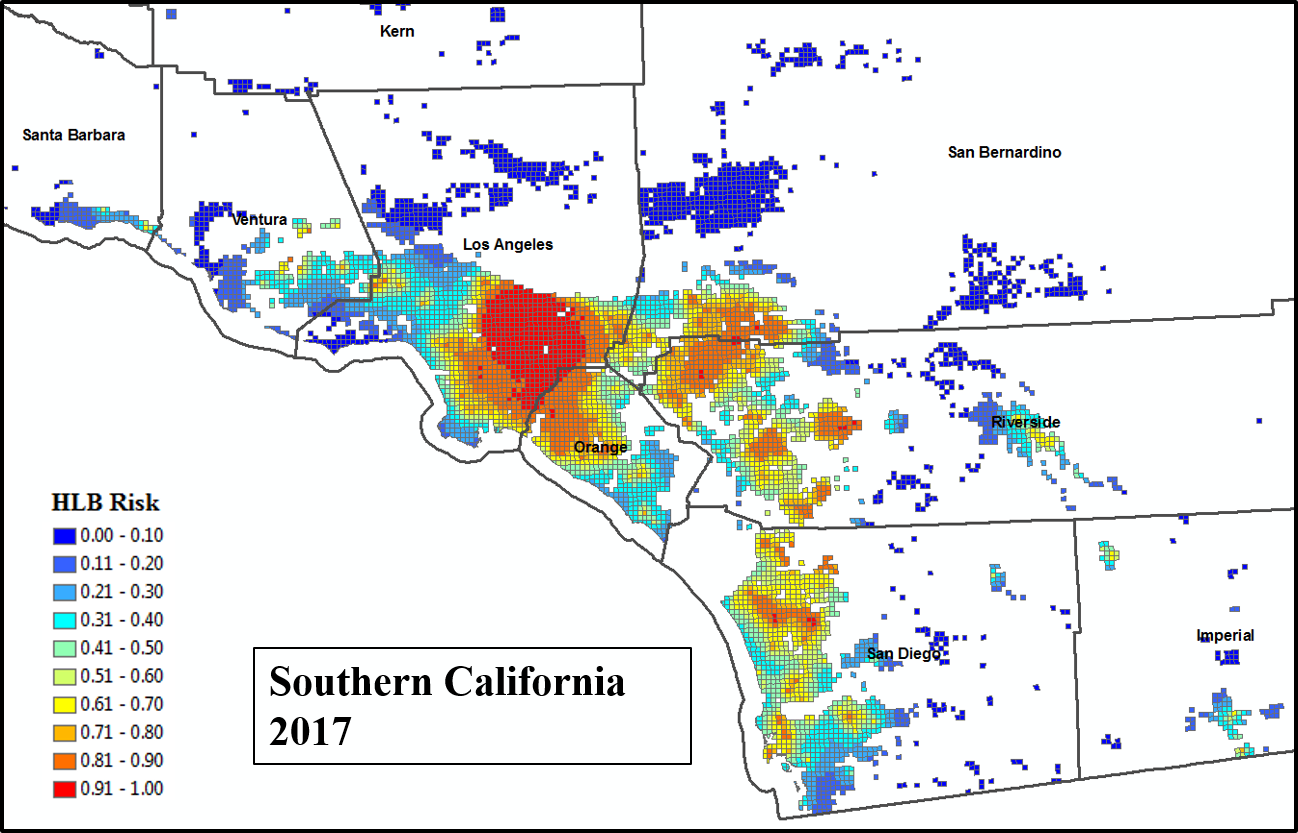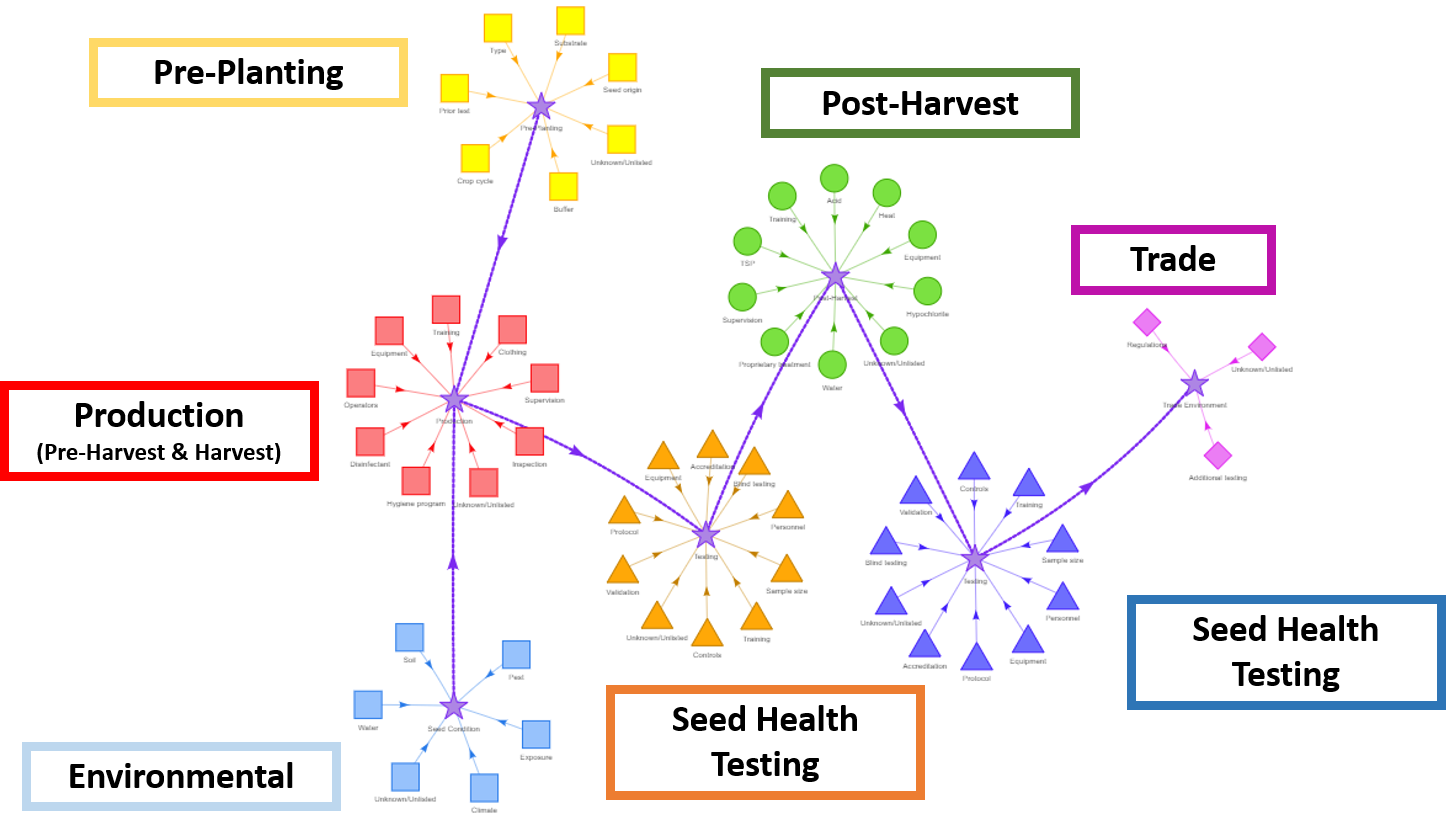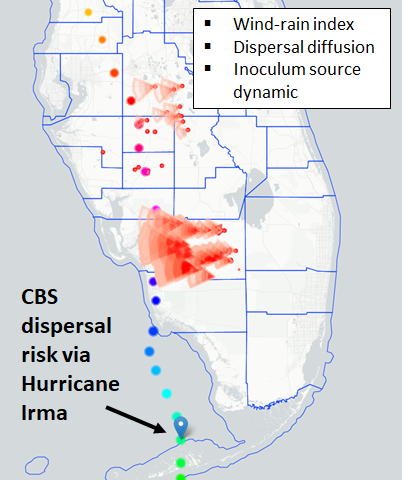TOOLS
Early Warning System: Predicting introductions of pests and pathogens in the US
International travel offers an extensive network for introductions of exotic pests and pathogens,
freeing any previously held geographical constraints. Linking medical facilities with areas at high risk for introductions
can assist in prioritizing training and detection services for emerging diseases.
A probabilistic model that integrates international travel with U.S. census
data and epidemiological characteristics to estimate introduction risk at multiple scales.
An online interface provides ease-of-use for regulatory agencies for early detection of high-risk exotics.
Risk-Based Survey: Deployment strategies for early detection and rapid response
Conducting surveys help growers and regulatory agencies to detect diseases and pests earlier in the epidemic phase, take appropriate
mitigation action, and reduce economic and production losses.
We have generated risk-based surveys implemented in the US and abroad:
- PPV in New York (aiding eradication in 2019) and California
- ACP/HLB in citrus-producing states (CA, FL, TX, AZ) and internationally (Argentina, Chile [under development])
- Multi-Pest Survey (MPS) in Florida for critical citrus pathogens
HLB
PPV
Go to Risk Map Dashboard
To assist with real-time manpower availability and fiscal resources that can impact effective
survey programs, we integrated a tool to assist with guiding deployment efforts in risk-based survey designs.
Read more…
McRoberts, N., Garcia Figuera, S., Olkowski, S., McGuire, B., Luo, W., Posny, D., and Gottwald, T. (2019).
Using models to provide rapid programme support for California's efforts to suppress Huanglongbing disease of citrus. Phil. Trans. R. Soc. B. 374: 20180281.
https://doi.org/10.1098/rstb.2018.0281
Gottwald, T., Luo, W., and McRoberts, N. (2017). Risk-based HLB Surveys for California: statewide and targeted. Citrograph 9(2): 38-43.
Gottwald, T., Luo, W., and McRoberts N. (2014). Risk-based Residential HLB/ACP Survey for California, Texas and Arizona. Citrograph 5(2): 52-59.
Gottwald, T., Luo, W., and McRoberts, N. (2017). Risk-based HLB Surveys for California: statewide and targeted. Citrograph 9(2): 38-43.
Gottwald, T., Luo, W., and McRoberts N. (2014). Risk-based Residential HLB/ACP Survey for California, Texas and Arizona. Citrograph 5(2): 52-59.
Phyto-Risk: Analyzing management practices throughout seed production
A probabilistic model to quantitatively assess the effects of management practices along the seed production pathway on phytosanitary risk for bacterial, viral and
fungal pathosystems.
Funding: TASC
Go to Phyto-Risk Model
The Bayesian modeling approach provides methods to
conduct pathway analyses and a framework on which to enhance systems approaches to management.
Post-Hurricane and catastrophic weather events: Targeting survey efforts
Meteorological events are effective at dispersing pests and inoculum over great distances.
Canker
CBS
Go to Hurricane Tool
We extended the initial predictive model to estimate spread via extreme weather events as a means for
efficiently allocating resources in targeted survey and detection programs post-event.
An interactive interface provides ease-of-use for guiding survey efforts post-hurricane event.
Read more…
Gottwald, T. R., and Irey, M. (2007). Post-hurricane analysis of citrus canker II: predictive model
estimation of disease spread and area potentially impacted by various eradication protocols following catastrophic weather events.
Online. Plant Health Progress.
https://doi.org/10.1094/PHP-2007-0405-01-RS
Irey, M., Gottwald, T.R., Graham, J.H., Riley, T.D., and Carlton, G. (2006). Post-hurricane analysis of citrus canker spread and progress towards the development of a predictive model to estimate disease spread due to catastrophic weather events. Online. Plant Health Progress. https://doi.org/10.1094/PHP-2006-0822-01-RS
Irey, M., Gottwald, T.R., Graham, J.H., Riley, T.D., and Carlton, G. (2006). Post-hurricane analysis of citrus canker spread and progress towards the development of a predictive model to estimate disease spread due to catastrophic weather events. Online. Plant Health Progress. https://doi.org/10.1094/PHP-2006-0822-01-RS



